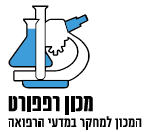
Yaara Finkel
Rappaport Medical Research Award - PhD student

Daniel Halperin
Rappaport Medical Research Award - PhD student
Yaara Finkel
Yaara Finkel is performing her PhD research in the lab of Prof. Noam Stern-Ginossar at the Weizmann Institute of Science, where she studies viruses from the herpes family, and recently also the new corona virus, SARS-CoV-2. As part of the corona research, Yaara examined how viral infection affects gene expression in the host cell. One of the most important steps towards understanding the biology of a virus is finding the full range of proteins it expresses. To get a full picture, Yaara and her colleagues used “Ribosome profiling”, a technology that enables exact mapping of the genomic sites that express protein-coding genes. This technology allows quantifying the level to which each gene is being translated into protein, and when combined with quantification of RNA levels (the molecule that codes for protein) can be used to calculate translation efficiency.
Together with her colleagues and thanks to collaboration with the Israeli Institute of Biological Research, Yaara identified translation of 23 SARS-CoV-2 genes that had been previously unknown. Some of these are likely to be functional in infection, and others have potential to act as regulatory elements. In a second study, which focused on host cell changes during infection, Yaara and her colleagues found that SARS-CoV-2 uses three distinct molecular mechanisms to shutoff cellular gene expression; translation block, RNA degradation, and specific silencing of newly activated genes (mostly immune response genes). With these, the virus blocks the host anti-viral immune response. These discoveries provide fundamental insights about SARS-CoV-2, providing a base that will contribute to development of anti-viral therapeutics and to the understanding of gene expression during viral infection.
Daniel Halperin
Daniel is an MD/PhD student at the physician-scientist training program at Ben-Gurion University. Under the guidance of Prof. Ohad Birk, head of the Morris Kahn Laboratory for Human Genetics at BGU, his work focuses on hereditary neurological diseases through studies of unique inbred kindreds and generation of various disease model systems. Daniel showed that familial attention-deficit hyperactivity disorder (ADHD) could be caused by a mutation in CDH2, encoding the adhesion protein N-cadherin, active in synaptogenesis. Daniel has demonstrated the mutation's pathogenicity and established a novel molecular mechanism for isolated ADHD. As part of his work, he generated CRISPR/Cas9 mice harboring the human mutation, which recapitulated core behavioral features of hyperactivity, modified by methylphenidate (Ritalin). Ex-vivo hippocampal cells of the mutant mice exhibited impaired presynaptic vesicle clustering, attenuated evoked transmitter release, and decreased spontaneous release. In addition, specific downstream molecular pathways were affected in the ventral midbrain and prefrontal cortex, with reduced dopaminergic distribution within limbic pathways. Notably, the mutant ADHD mouse strain can now serve as a model system for developing novel ADHD therapies.
In yet another study, Daniel showed that a mutation in SEC3A1 causes a novel severe intellectual disability microcephaly syndrome. Furthermore, he demonstrated that SEC31A null mutant cell lines had reduced viability through upregulation of ER-stress pathways and recapitulated microcephaly in fruit flies null mutant for the SEC31A Drosophila ortholog.
These and other projects that Daniel has carried out delineate novel insights regarding molecular pathways in neural development and neurological diseases.

Maya Schiller
Rappaport Medical Research Award - PhD student

Hadar Israeli
Rappaport Medical Research Award - PhD student
Maya Schiller
Maya Schiller is an MD/PhD student from the Technion, a program which integrates medicine and research studies. In her research, she concentrated on the causal relationships and communication pathways between the brain and the immune system. Using state of the art techniques, she was able to manipulate specific central and peripheral neurons, allowing her to establish a causal connection between neuronal activation and peripheral immunity.
During her research Maya found that activation of the brain’s reward system in tumor bearing mice reduced tumor size by 50%, an effect which was mediated via the sympathetic nervous system (SNS). Mechanistically, reward system activation altered the bone marrow’s sympathetic innervations, the site of immune cell development, thereby altering the emerging immune cells and their anti-cancer ability. To further understand how the brain regulates immunity via the SNS, she focused on the sympathetic innervations of the intestine, as a highly immune-active organ vastly innervated by the SNS. Activation of the SNS attenuated inflammation in the intestine, manifested both clinically and histologically. Sympathetic activation reduced immune cell extravasation from the blood to the inflamed intestine via changes in endothelial cells. Therefore, she showed that the SNS engages in unique control of the endothelial gateway, thus controlling the intensity of the inflammatory process.
Maya’s work provides strong evidence for the emerging concept of brain-immune communication via the SNS, holding potential implications in various clinical settings.
Hadar Israeli
Hadar Israeli is a student in the MD/PhD program at the Hebrew University. This program combines medical school with basic and translational research, in a lab near Hadassah Ein Kerem Medical Center. Her PhD thesis involves different aspects of obesity. One of the major comorbidities of obesity is fatty liver disease, affecting approximately 1 in 4 adults worldwide. This disease can progress and lead to inflammation of the liver, and in some cases even cancer. There is currently no effective treatment. Under the supervision of Dr. Danny Ben-Zvi, Hadar's research is aimed at exploring hepatic mechanisms which can alleviate fatty liver disease. To that end, she uses mouse models combined with human data. A better understanding of these mechanisms can be the basis for development of possible treatments.
Another aspect of Hadar's PhD is the regulation of satiety in the brain. This work has been made in collaboration with the lab of Dr. Moran Shalev-Benami at the Weizmann Institute of Science, specializing in determination and visualization of three-dimensional structures of proteins, in atomic resolution. Using this method, it was possible to determine the structure of a receptor found in the brain center which is responsible for appetite and energy homeostasis. Activation of this receptor results in satiety. The activation mechanism uncovered resembles a molecular ‘switch’, toggling between hunger and satiation. The structure could lead to rational design of specific therapeutic molecules for treatment of different obesity disorders.



